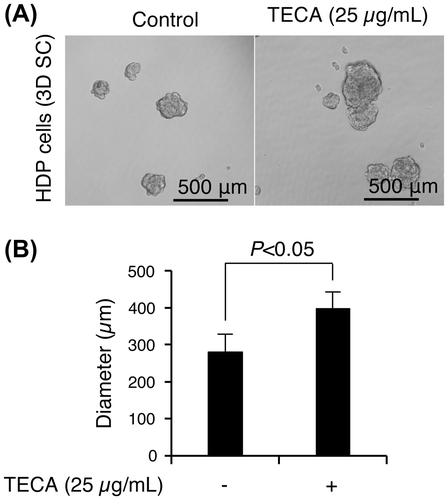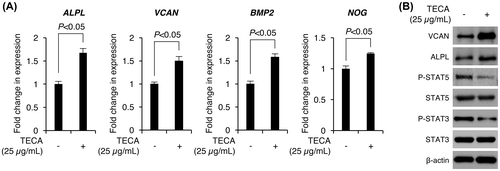Figures & data

Fig. 1. Effect of TECA treatment on the viability of 2D monolayer cultured (A) and 3D spheroid cultured HDP cells (B).

Fig. 2. Comparison of spheroid formation of control and TECA-treated HDP cells.

Fig. 3. Effects of TECA treatment on Wnt/β-catenin signaling activity in 3D spheroid cultured HDP cells.

Fig. 4. Effects of TECA treatment on JAK/STAT signaling activity in 3D spheroid cultured HDP cells.

Fig. 5. Effects of TECA treatment on the expression levels of DP signature genes in 3D spheroid cultured HDP cells.

